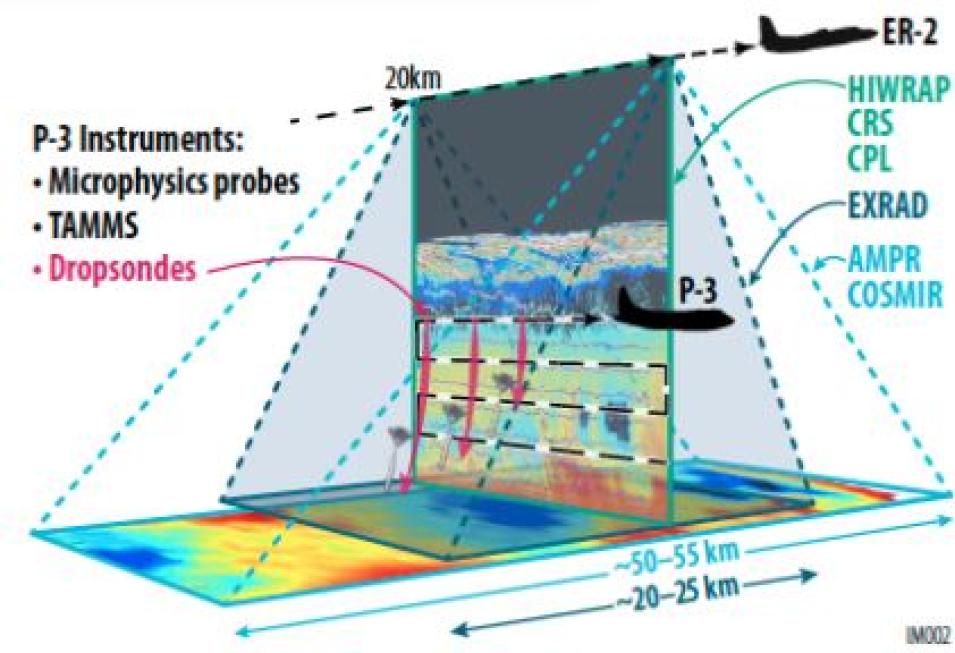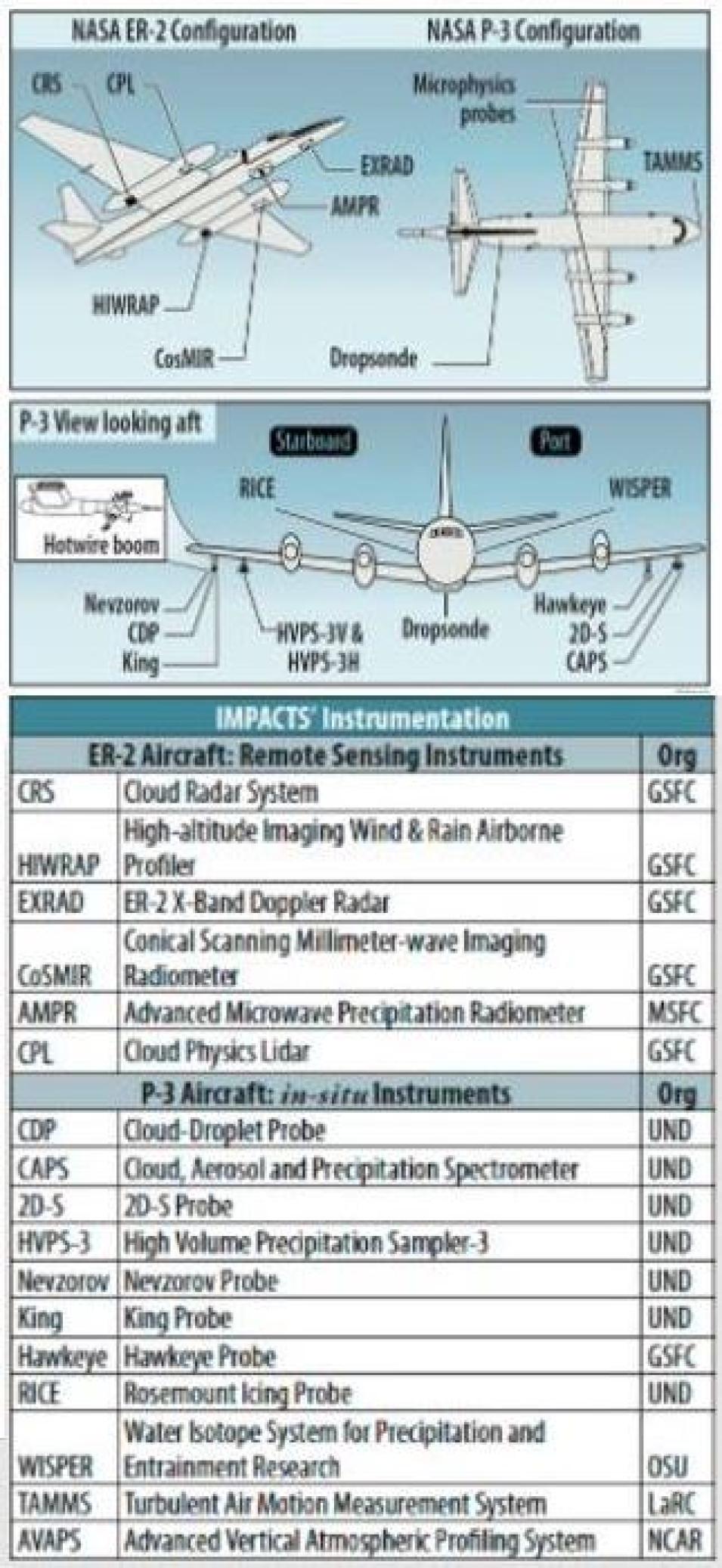States of emergency were declared for New Jersey, New York City, and more than 40 counties in New York State on February 1, 2021, after a massive winter storm pummeled the East Coast. The storm’s heavy snows and high winds closed schools, cancelled thousands of flights, and wreaked havoc on local travel—and if there wasn’t a global pandemic, there would have likely been a NASA P-3 Orion research aircraft flying right through its most intense snowbands.
Outfitted with an array of state-of-the-art microphysics probes and dropsonde capabilities, the P-3 aircraft is one of two planes used in NASA’s Investigation of Microphysics and Precipitation for Atlantic Coast-Threatening Snowstorms (IMPACTS) field campaign. The other is the ER-2 and, together, they’ll collect an impressive amount of data that scientists will use to identify and investigate the processes that form and drive the snowbands inside winter storms.
Winter snowstorms like the one that brought New York City and New Jersey to a stand-still last February are not uncommon along the East Coast. Yet the processes inside these storms that produce such large amounts of snow are poorly understood by scientists and poorly predicted by the numerical weather models. IMPACTS, the first comprehensive study of East Coast snowstorms in 30 years, aims to change that.
“The goal of IMPACTS is to give scientists a better understanding of what is driving the processes that create and generate snowfall, particularly the intense snow bands,” said Dr. Geoffrey Stano, Chief Scientist at NASA’s Global Hydrometeorology Resource Center Distributed Active Archive Center (GHRC DAAC). “This will improve our scientific understanding, which in turn could be applied to operational forecasting.”
Funded by NASA’s Earth Venture program, IMPACTS has three main objectives: provide observations critical to understanding the mechanisms of snowband formation, organization, and evolution; examine how the microphysical characteristics and likely growth mechanisms of snow particles vary across snowbands; and improve remotely sensed interpretations and modeling of snowfall to advance prediction capabilities.
That IMPACTS is the first major field campaign to investigate these processes in the past 30 years is significant, as it gives scientists an opportunity to study these storms with the latest remote sensing and meteorological technologies.
“What makes [IMPACTS] interesting is that you have the Geostationary Operational Environmental Satellite-16 (GOES-16) satellite that’s constantly running for you, you have the National Weather Service’s radar, soundings, and weather balloons and, on top of all that normal instrumentation, the field campaign is bringing together different universities that provide different ground instrumentation, such as launching weather balloons at different locations and times, and ground instruments that help identify the type and amount of precipitation, and you put that in the way of the storm versus waiting for the storm to come to you,” said Stano. “At the same time, you have aircraft—the ER-2 and the P-3—providing instrumentation that, in the P-3’s case, allow you to take in-situ measurements from inside clouds. There is really no other way to get these kinds of observations.”
Those aircraft—the ER-2 and the P-3—comprise the heart of the IMPACTS mission, as the instruments they carry provide a range of measurements for the campaign’s study of snow-generation processes.


